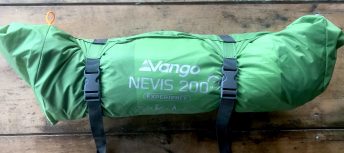Knowing what to pack for a backpacking trip can be tough. It’s very important to take enough gear to keep safe and comfortable, but it is very tempting to over-pack and take things that ‘I might need if…’ Often, this kind of item can be left at home unless it’s for safety. In this post I’ll talk about what gear I would always take, and how I decide about extra gear.
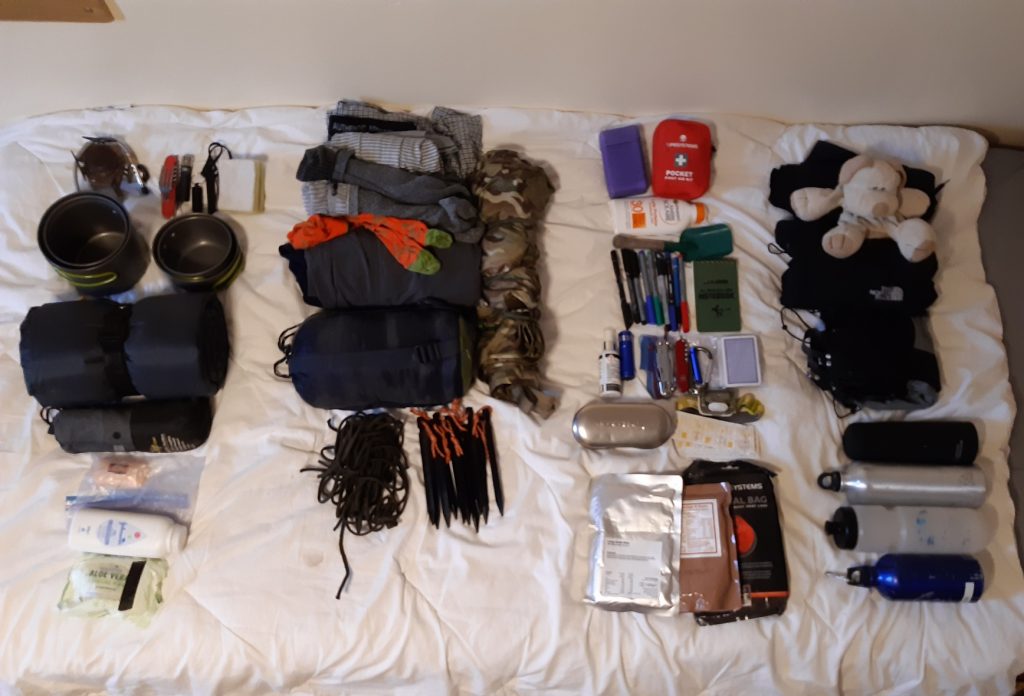
Backpacking Types
We often hear talk of ‘ultra-light’ backpacking, where every gear item weighs almost nothing – and is usually multifunctional. Ultra-light setups are extremely expensive, well beyond most people’s price ranges (including mine). Depending on how long I plan to be out for, weight may not be too much of a problem. For longer trips, however, I really need to justify everything I carry, otherwise I risk injury from a heavy pack. Even still, there is no upside of carrying too much stuff, even for short trips. Everything here is a trade-off.
If you would like to go ‘ultra-light’ (or at least partly), check out our Budget Ultralight section for some cheap gear items to really lighten your load – they’ve really helped me. Check them out here.
A Note on Bag Packing
Packing your bag is an essential skill that can be tricky at first. It’s also very important to pack in a way that everything is conveniently accessible, and to prevent injury. The basic idea is that a bag should be well balanced left/right, and heavier items should be lower down and closer to your back. This just helps keep your centre of gravity closer to where it should be and makes walking easier. It also makes sure that the majority of the pack’s weight is on your hip belt, not on your shoulders. We have a guide on packing bags efficiently here.
Must Have
There are a few simple items that are a must-have, but some of the things its good to have are far less obvious. In this post, I’m not going for an ultra-light setup, but I won’t include any unnecessary bells and whistles. And remember – this works for me, but it might not be the best for anyone else. The only way you’ll know whats best for you is by trial and error. This isn’t meant to be a guide to all my gear, it’s only about what items I take.
Assuming you’re not planning on bushcraft-style living, the bare essentials are:
‘The Big 3’
– Pack, Shelter and Sleep
1. Pack
A good, sturdy pack is essential. Make sure it’s big enough for everything you need – when starting out, 60-70l is a good idea. The Vango Contour 60:70 (our review) is a great, cheap pack of this size.
2. Shelter
Shelter comes in many shapes and sizes, from simple tarps to full tents. Whatever shelter type you choose, you will need something you are confident at pitching, even in bad conditions. Especially at a lower budget, tarps are lighter and more versatile, but far harder to pitch.
We recommend:
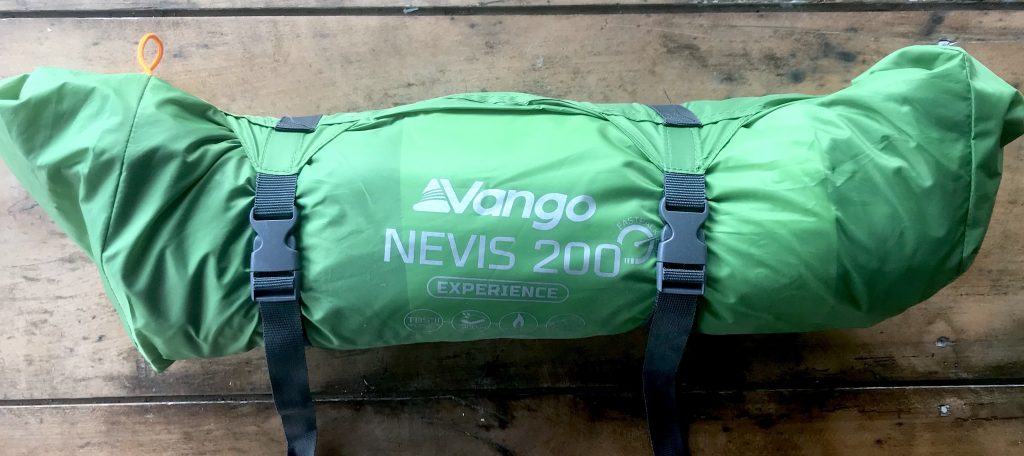
3. Sleep
Your ‘sleep system’ will change depending on the season and your shelter, but at the most basic, will include a sleeping mat and a sleeping bag. Sleeping bags can be very expensive, so for a really cheap, lightweight summer bag I recommend the Mountain Warehouse Traveller 50 (our review). For extra warmth, you may want to take a sleeping bag liner, which also helps keep your bag clean.
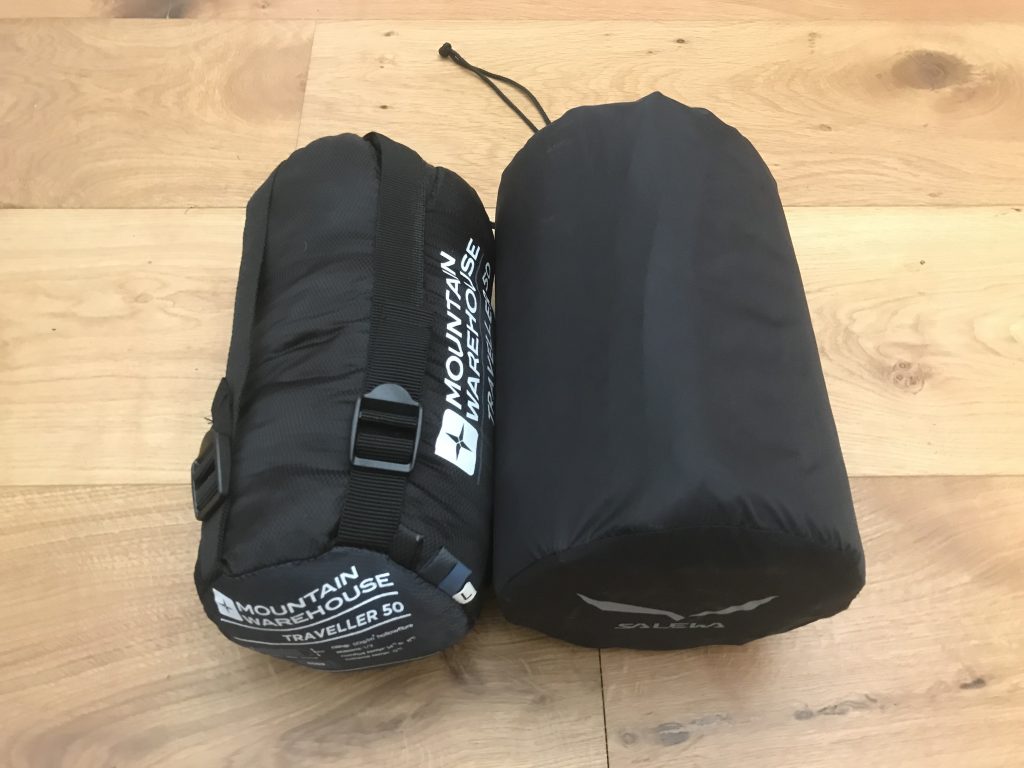
Food
Especially for trips in the UK, I would recommend taking a stove of some kind. It is possible to ‘cold soak,’ i.e. not have to cook, but a warm meal is worth it. In my ‘cook system’ I have:
- Canister stove – BRS-3000t (our review)
- Gas canister
- 750ml stainless steel pot
- Small mug
- Long-handled titanium spork
- Pocket knife
- Small towel (as a clean space to put things down)
- Water purification tablets
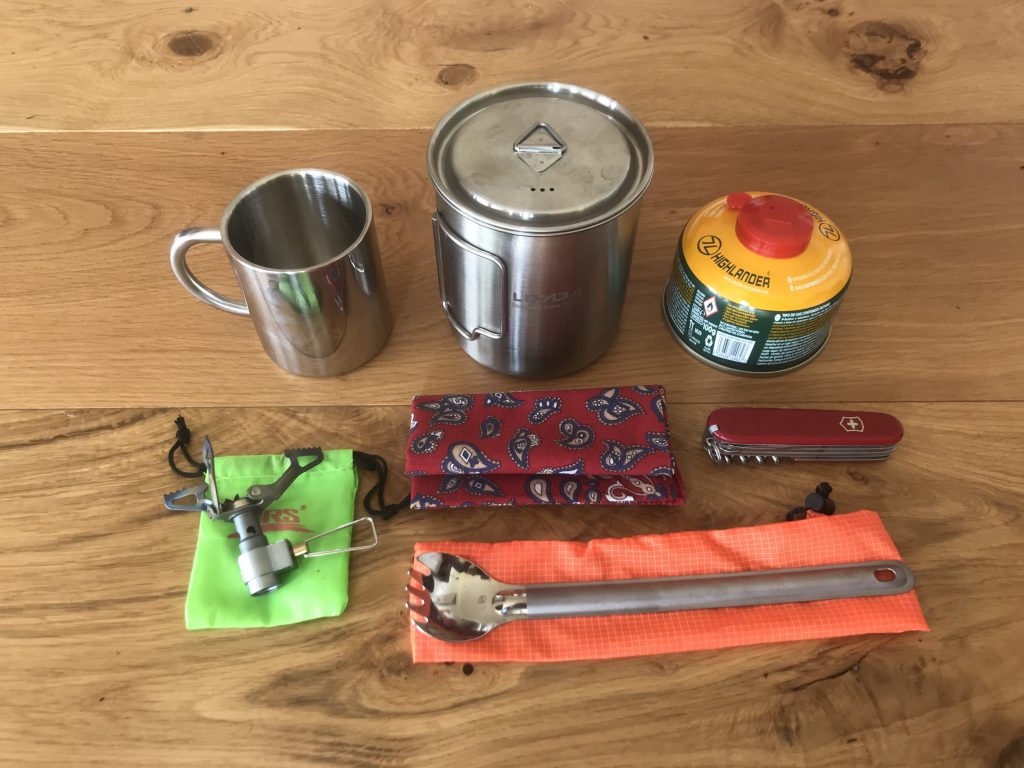
I carry a drybag to keep all my food in, while keeping it separate from the rest of my gear. At least 2l of water capacity is essential.
Hygiene
It is a fact of backpacking that you won’t wash as much as you do at home, but it’s still important to keep clean. My minimal wash kit includes:
- Toothbrush
- Toothpaste
- Hand sanitiser
- Lip balm
- Microfibre towel
- Trowel and toilet paper (for trips with wild camping)
I also carry a largish first aid kit – it is definitely overkill, but comforting to have
Clothing
Clothing is the hardest to get right. Not having enough is miserable and cold, while too much is inefficient.
If you plan a shorter trip (up to 1 week), I recommend taking one set of clothes for every 3 days, plus an extra. This is possibly overkill, but I’ve found it worth the weight because it gives you leeway if you get soaked. Good hiking trousers are essential – jeans aren’t good enough. When wet they can give you hypothermia.
I usually carry:
- Walking trousers (1 for every 3 days, +1)
- T-shirts (1 for every 3 days, +1)
- Hoodie (2 if it is cold)
- Thin down jacket (I carry a Norman Trespass)
- Gloves, warm hat/sunhat
- Merino base layer (if you have, I don’t)
- Underwear (inc. socks), up to 1 per day
The final thing I carry is a luxury item. I like to have some footwear to put on in camp, rather than wearing my boots, so I carry flip-flops (or sometimes more enclosed outdoor shoes, if they fit).
Tech
The final things you need to have with you are a few tech items. When going out, especially if solo, you must have a phone. It is extremely irresponsible not to, as it could waste hours of Mountain Rescue’s time should anything go wrong. You must also have a way to keep that phone charged up. I carry an OMARS portable charger.
Conclusion
Knowing what to pack for a backpacking trip in the mountains can be extremely difficult, especially for beginners. In this post, I have hardly touched on safety equipment. You will, of course, need extra gear to keep you safe. This includes a whistle, survival bag, and, crucially, knowledge about how to use your emergency gear as well as other things. If you have gear that you don’t know how to use, it can give you a false sense of security – which is more dangerous than not having the gear at all. So we all have to make sure we are first-aid competent before putting others at risk to help us.

